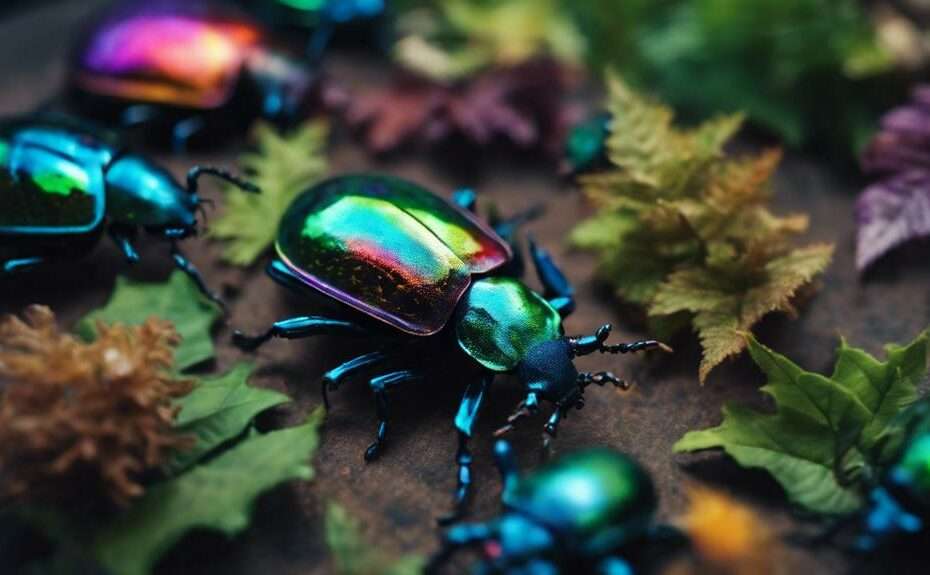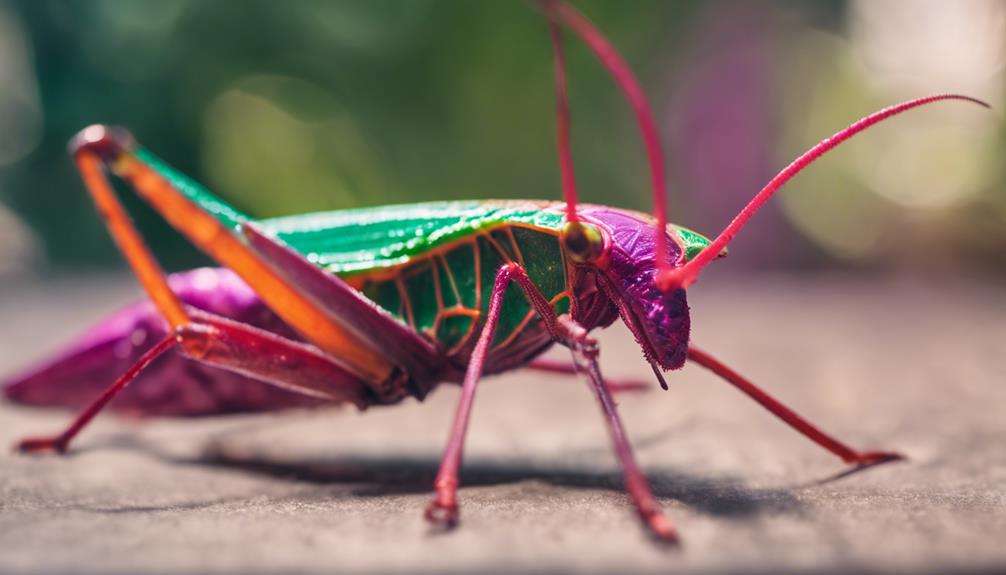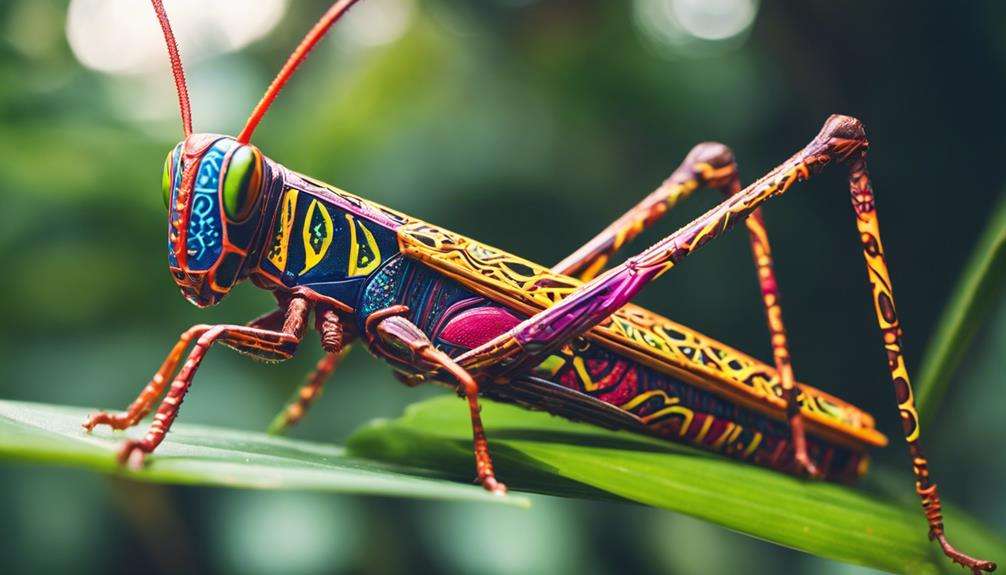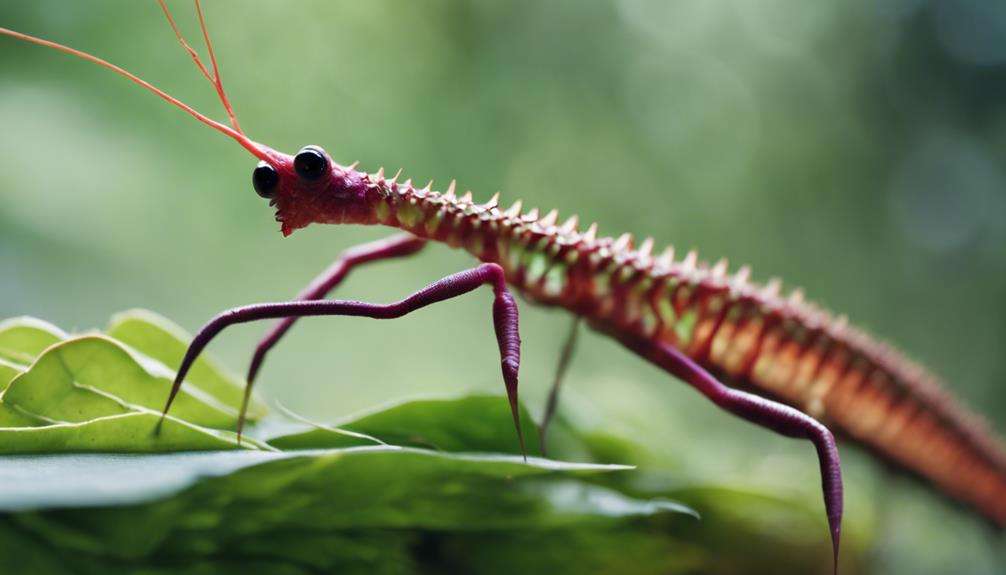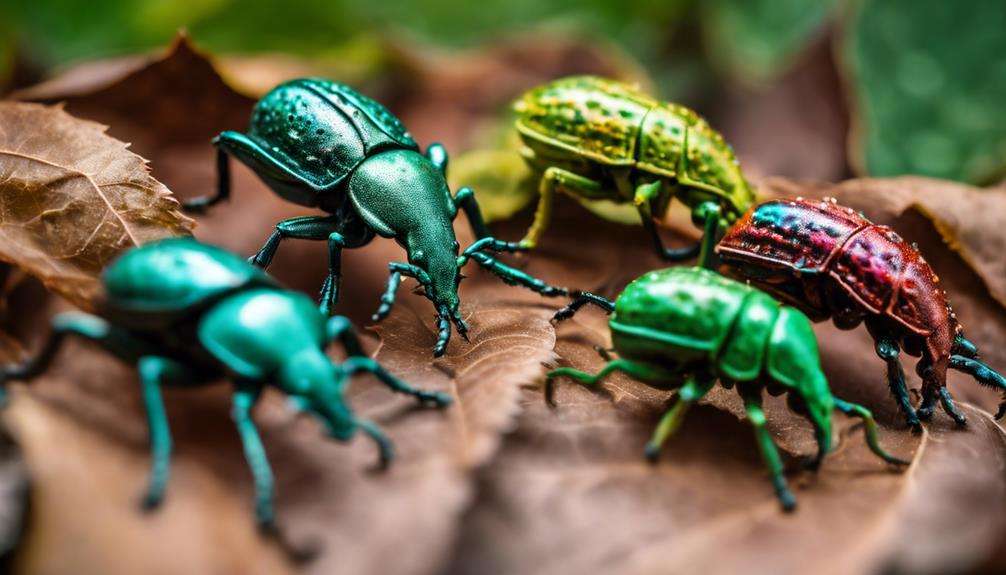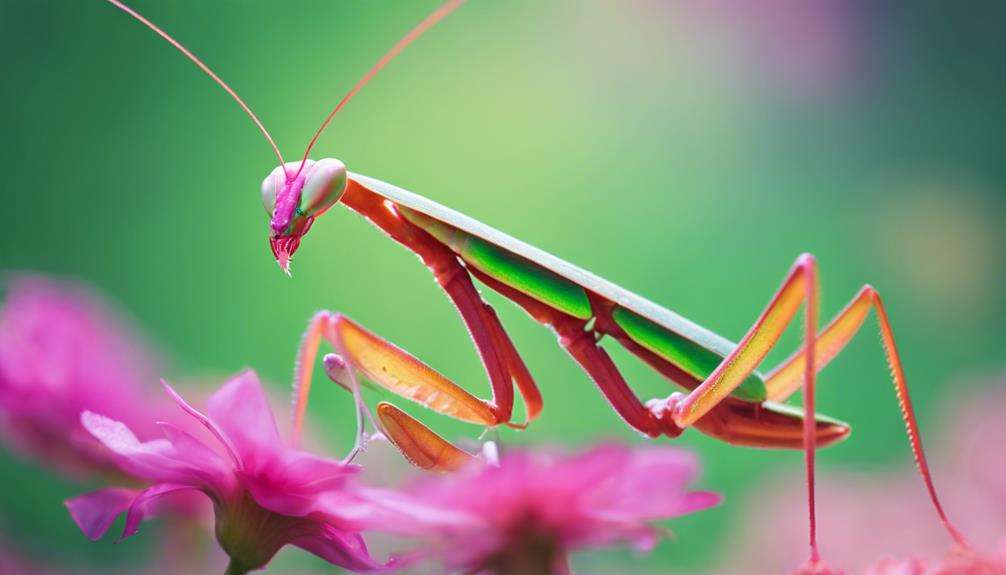You might be hesitant about keeping beetles as pets due to their small size and delicate appearance. However, did you know that rare beetles can make fascinating companions that require minimal maintenance?
Imagine observing the intricate behaviors of these unique creatures up close, uncovering their mysterious world one detail at a time.
There's more to discover about the captivating realm of rare beetles and how they can become an intriguing addition to your collection of exotic pets.
Key Takeaways
- Comprehensive care guide is crucial for exotic beetle species like Hercules, Goliath, and Flower beetles.
- Terrarium requirements include proper ventilation, temperature, humidity, and substrate for exotic beetles.
- Spacious enclosures with climbing opportunities and regular maintenance are essential for exotic beetles' well-being.
- Balanced nutrition, suitable breeding conditions, and safe interactions are key for keeping rare beetles as pets.
Unique Beetle Species for Pets
When considering unique beetle species for pets, the Hercules beetle, Goliath beetle, and Flower beetle stand out for their remarkable size and appearance. These beetles are favored among enthusiasts for their impressive characteristics, making them intriguing choices for those looking to keep exotic beetles.
The Hercules beetle, known for its iconic horn-like structures, can reach sizes of up to 7 inches and comes in various colors, adding to its allure as a pet. Similarly, the Goliath beetle, with its robust body and striking patterns, captivates beetle keepers with its size, which can exceed 4 inches. On the other hand, the Flower beetle, recognized for its vibrant colors and unique shapes, provides a visually appealing option for those interested in caring for beetles.
Keeping these unique species as pets requires specific knowledge and attention to detail, making a comprehensive guide essential for enthusiasts venturing into the world of exotic beetle keeping.
Habitat Requirements for Exotic Beetles
When creating a habitat for exotic beetles, ensure the terrarium is well-ventilated and has a secure lid to prevent escapes.
Maintaining appropriate temperature and humidity levels, along with a suitable substrate like coconut fiber or peat moss, is crucial for the well-being of these beetles.
Including live plants can further enhance the habitat and provide a more natural environment for your exotic beetle pets.
Beetle Enclosure Size
To ensure the well-being of your exotic beetle pet, it's essential to provide a spacious enclosure tailored to their size and activity level, typically ranging from 10 to 20 gallons based on the species.
Exotic beetles, such as the Goliath beetle, may require custom-built terrariums due to their larger size and flying capabilities. Creating a habitat that allows for climbing opportunities and burrowing tunnels is crucial for these beetles to exhibit their natural behaviors.
Researching your specific exotic beetle species will help determine the ideal habitat setup, including substrate depth, humidity levels, and temperature gradients.
Proper ventilation within the enclosure is vital to prevent mold growth and ensure fresh air circulation, contributing to maintaining optimal conditions for your beloved beetle companion.
Temperature and Humidity
Maintaining precise temperature and humidity levels within the habitat is imperative for the optimal health and well-being of rare exotic beetles kept as pets. To ensure your beetles thrive, follow these guidelines:
- Exotic beetles thrive in temperatures between 20-25°C and humidity levels of 70-80%.
- Use a digital thermometer and hygrometer to accurately monitor the habitat conditions.
- Create a thermal gradient in the habitat for beetles to regulate their body temperature effectively.
- Proper temperature and humidity control mimic the natural environment, supporting the overall health and activity levels of rare beetles.
Feeding Guidelines for Rare Beetles
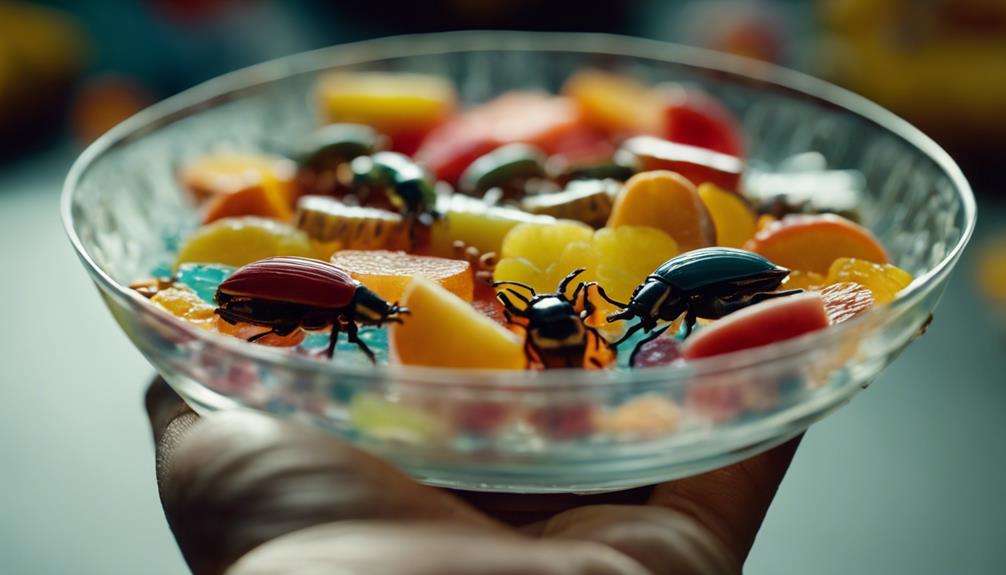
Understanding the dietary requirements of rare beetles is essential for their proper nutrition and well-being. Rare beetles have specific feeding needs that must be met to ensure their health. Their dietary requirements may include a variety of foods such as fruits, vegetables, beetle jelly, and specialized beetle food pellets. Some rare beetles may also require supplements like calcium powder or insect protein to maintain optimal health.
It's crucial to observe the feeding habits and preferences of rare beetles to provide them with a suitable diet. Feeding schedules for rare beetles can vary depending on factors such as species, age, and individual requirements. To promote their overall well-being and longevity, it's important to offer a diverse and balanced diet that ensures they receive all the necessary nutrients for growth and development.
Handling and Care Tips
When caring for rare beetles, ensure gentle handling and avoid sudden movements to prevent stress and potential injury. Here are some essential handling and care tips for your rare beetle companion:
- Research Care Requirements: Rare beetles may have unique needs, so it's crucial to research and understand the specific care requirements of your beetle species.
- Provide Suitable Habitat: Create a habitat with the right substrate, humidity levels, and temperature to mimic the natural environment of your rare beetle.
- Offer Varied Diet: Ensure your rare beetle receives a balanced diet that includes fruits, vegetables, and protein sources to meet its nutritional needs.
- Monitor Health Regularly: Keep a close eye on your rare beetle's health and behavior. Early detection of any signs of illness or stress is key to providing timely care and intervention.
Ideal Enclosures for Exotic Beetles
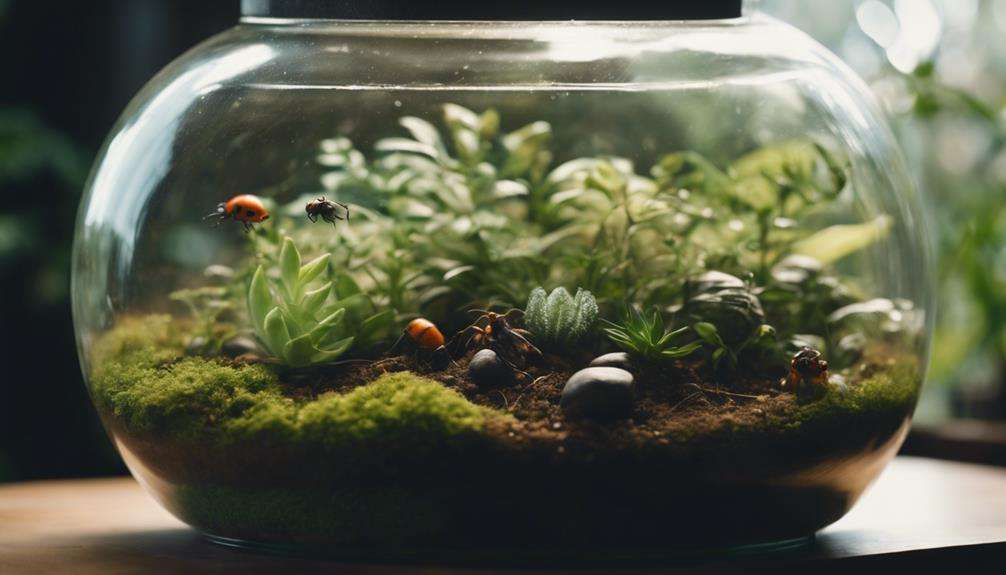
For providing optimal care and ensuring the well-being of exotic beetles, selecting spacious terrariums with appropriate ventilation and substrate depth is crucial. Enclosures should mimic the natural habitat of the beetle species, replicating specific temperature and humidity levels. It's essential to provide hiding spots and climbing structures within the enclosure to allow exotic beetles to feel secure and exhibit natural behaviors.
When setting up an ideal enclosure for exotic beetles, consider researching the specific needs and behaviors of the species. Some exotic beetles may require specialized lighting or heating elements to maintain optimal conditions. By understanding their natural habitat requirements, you can create a suitable environment that promotes their well-being.
Remember that proper ventilation and substrate depth are key factors in maintaining a healthy enclosure for exotic beetles. Ensuring they've enough space to move around and providing elements that mimic their natural environment will contribute to their overall health and comfort.
Behavioral Insights of Rare Beetles
Rare beetles exhibit a diverse range of intriguing behavioral patterns that captivate enthusiasts and researchers alike. Understanding these behaviors is crucial for providing appropriate care, enrichment, and breeding opportunities for these fascinating insects.
Here are some key insights into the behavioral patterns of rare beetles:
- Mating Rituals: Some rare beetles display intricate mating rituals, involving dances and displays of strength to attract mates.
- Parental Care: Certain species of rare beetles are known for their exceptional parental care, with adults guarding and feeding their offspring until they're independent.
- Feeding Behaviors: Rare beetles exhibit specialized feeding behaviors, such as scavenging, predation, or herbivory, which are influenced by their ecological niche.
- Care and Breeding Opportunities: By observing the behavioral cues of rare beetles, enthusiasts can provide optimal care and create suitable breeding environments to enhance the well-being and breeding success of these captivating insects.
Health Considerations for Beetle Pets
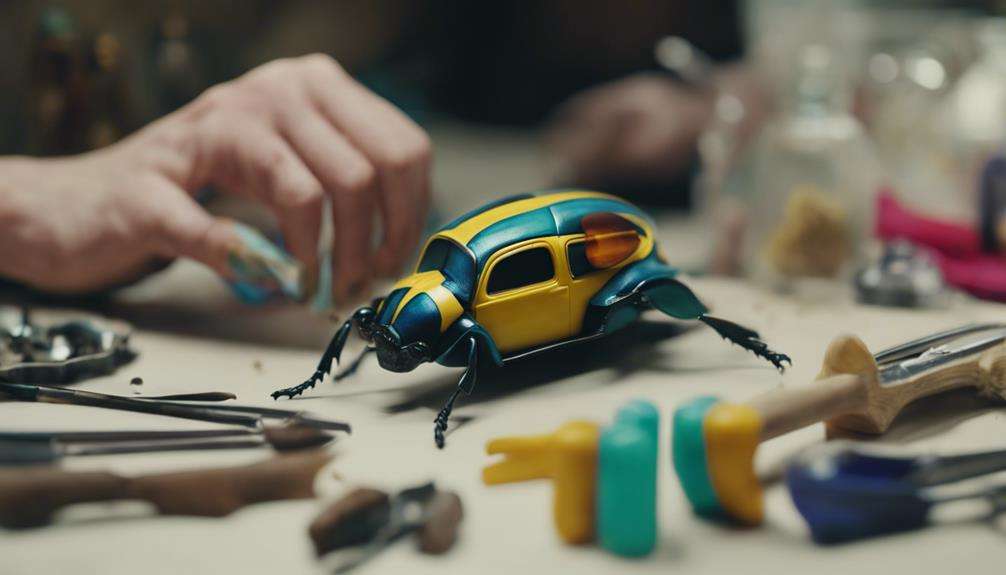
Monitoring the health of your beetle pet involves observing its behavior, appetite, and physical appearance regularly for any signs of illness or distress. Pay close attention to any changes in behavior such as lethargy, excessive grooming, or unusual aggression, as these may indicate underlying health issues.
Ensure your beetle has a varied diet including fruits, vegetables, beetle jelly pots, and occasional protein sources to meet its nutritional requirements. Proper humidity levels in the terrarium are crucial to prevent dehydration and maintain your beetle's well-being.
Maintain a clean habitat by removing uneaten food, feces, and any mold to prevent infections. If you notice any concerning symptoms or behaviors in your beetle, such as decreased appetite or discoloration, consult a vet experienced with exotic pets promptly. Early intervention can be crucial in treating potential health problems.
Breeding Rare Beetle Species
Breeding rare beetle species necessitates meticulous planning and a deep understanding of their specific breeding requirements. To successfully breed rare beetle species, consider the following:
- Understanding Mating Behavior: Familiarize yourself with the unique mating rituals and behaviors of the specific rare beetle species you're working with to facilitate successful reproduction.
- Providing Ideal Environmental Conditions: Ensure the environmental conditions, including temperature, humidity levels, and substrate quality, mimic the natural habitat of the rare beetles to encourage breeding activities.
- Meeting Diet Requirements: Some rare beetle species may have specific dietary needs during the breeding process. Providing the correct nutrition is vital for the health and development of the offspring.
- Monitoring and Care: Regularly monitor the breeding process, parent beetles, and larvae. Providing proper care, such as maintaining cleanliness and suitable living conditions, is essential for a successful breeding outcome with rare beetle species.
Interactions With Other Pets

When considering interactions between beetles and other pets, it's crucial to prioritize the safety and well-being of all animals involved. Keep beetles away from pets like cats, dogs, and birds to prevent harm or stress.
Avoid placing beetles in the same habitat as other insects or invertebrates to prevent potential conflicts. Beetles have specific environmental needs that may not align with those of other pets, so separate housing is essential.
Some pets may perceive beetles as food or a potential threat, leading to dangerous interactions. Therefore, it's important to supervise interactions between beetles and other pets closely to ensure the safety of all animals involved.
Finding Rare Beetles for Adoption
To expand your beetle collection with unique and rare species, exploring avenues like specialized breeders, insect expos, and online forums dedicated to exotic beetles can lead you to find these fascinating creatures for adoption.
When seeking rare beetles for adoption, consider the following:
- Specialized Breeders: Reputable breeders often have access to rare beetle species and can provide valuable information on their care requirements.
- Insect Expos: These events can be a treasure trove for finding rare beetles, allowing you to interact directly with sellers and enthusiasts.
- Online Forums: Joining online communities focused on exotic beetles can connect you with individuals looking to rehome rare species or provide insights on where to find them.
- Care Requirements: Before adopting a rare beetle, thoroughly research their specific care needs to ensure you can provide a suitable environment for their well-being.
Frequently Asked Questions
What Beetles Can You Keep as a Pet?
You can keep a variety of beetles as pets, such as flower beetles, stag beetles, and diving beetles. They require specific care, habitats, diets, and exhibit unique behaviors based on their species, influencing their lifespan.
What Is the Coolest Beetle for a Pet?
When choosing a pet beetle, the Rainbow Stag Beetle stands out as the coolest choice. Its iridescent colors, native to Australia, vibrant appearance, and long lifespan make it a fascinating option for beetle enthusiasts.
What Is the Rarest Beetle in the World?
The rarest beetle globally is the Titanus giganteus, an endangered species facing declining populations due to habitat loss. Conservation efforts are crucial to protect its unique habitat and genetic diversity for future generations and beetle enthusiasts worldwide.
Can I Keep a Ground Beetle as a Pet?
You can keep a ground beetle as a pet. Care for them by providing a suitable habitat mimicking their natural environment. Offer a diet of small insects like mealworms and crickets. Enrich their space with hiding spots for their nocturnal behavior.
Conclusion
As you embark on the journey of caring for rare beetles as pets,
remember that each species is a unique treasure waiting to be discovered.
Like precious gems in a vast desert, these beetles shine with vibrant colors and intricate patterns, offering a glimpse into the beauty of nature's design.
By providing them with proper care and attention, you can unlock the hidden wonders of these exotic creatures and create a harmonious ecosystem within your own home.
